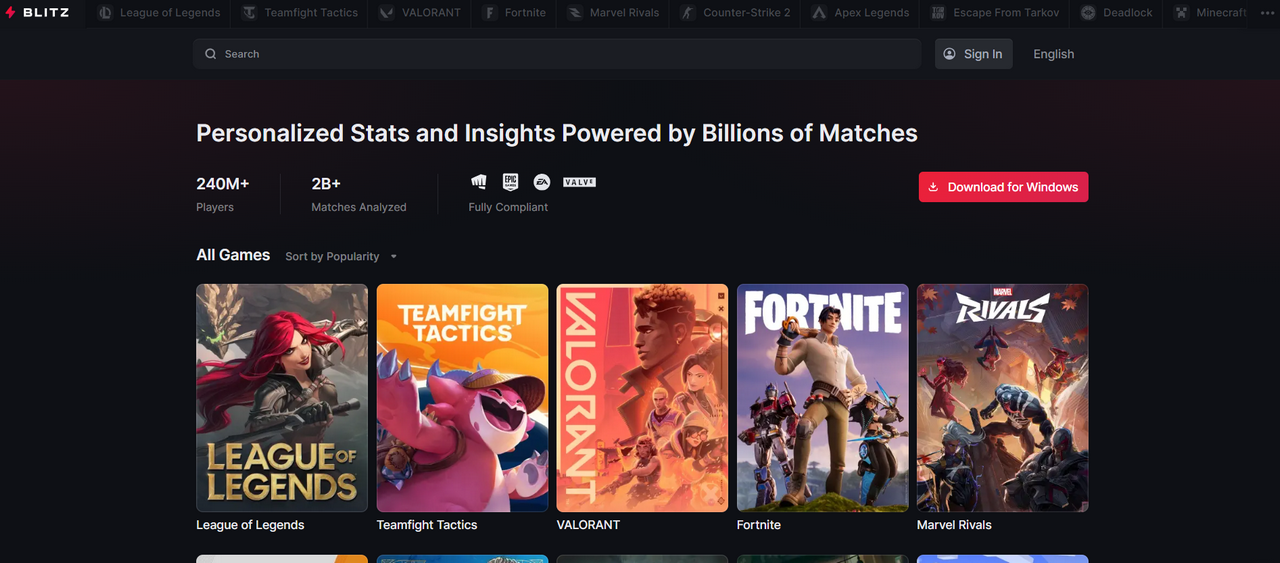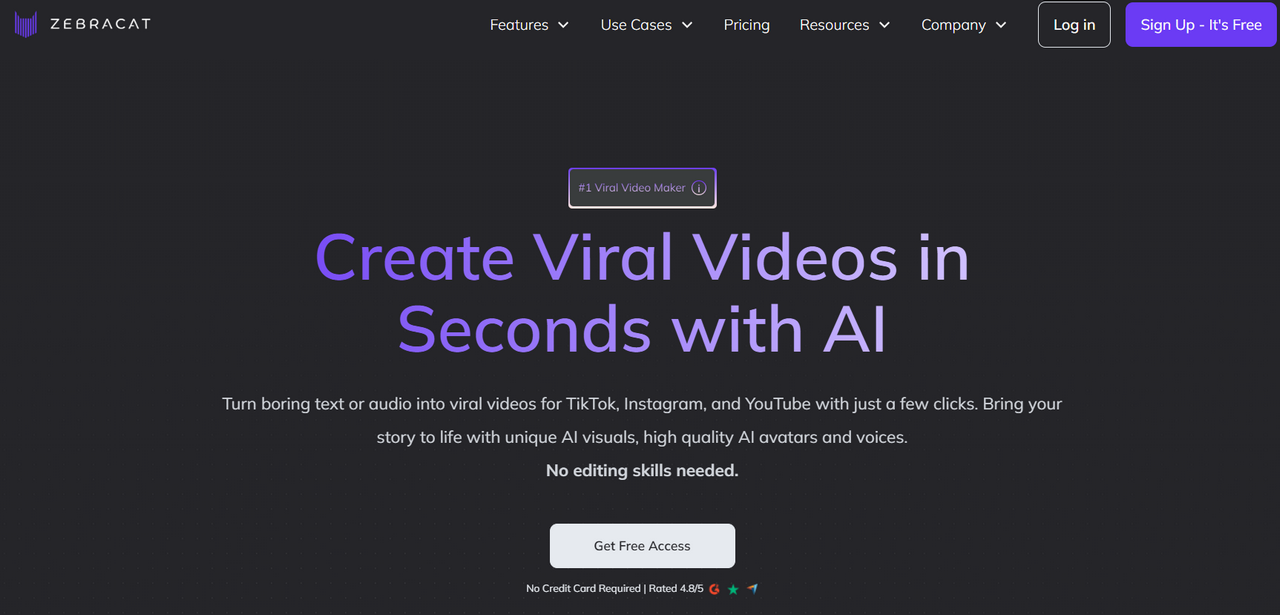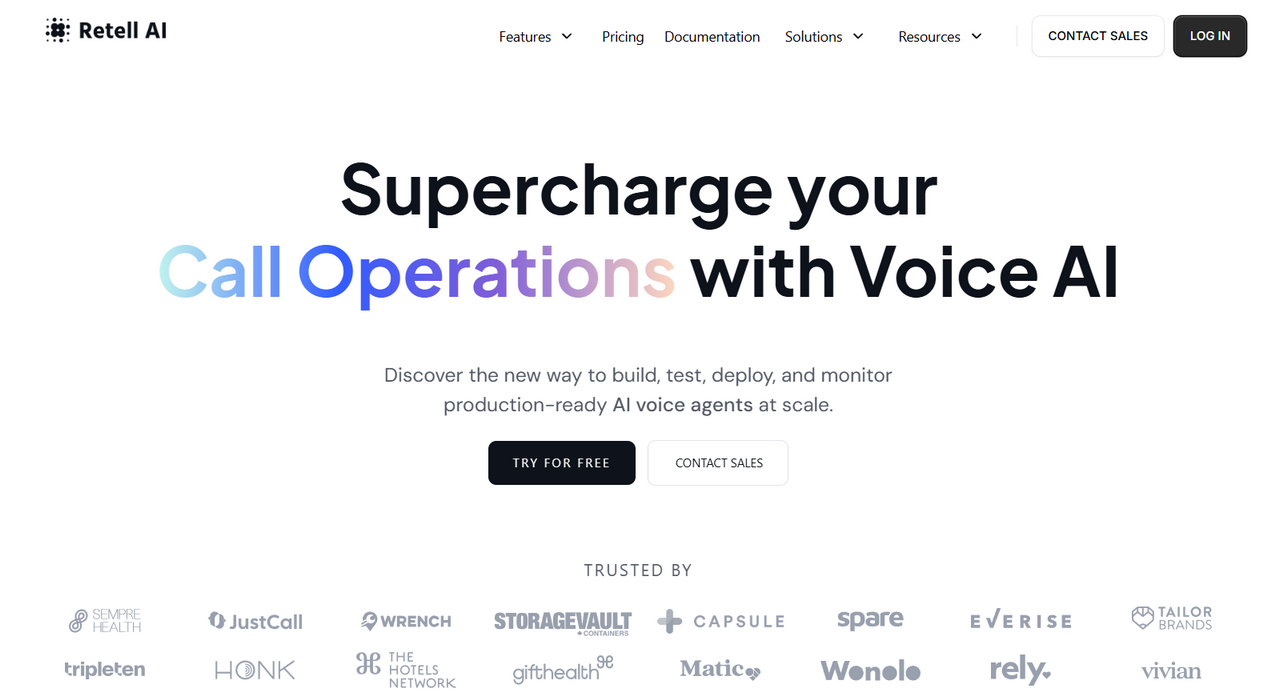With over 359 million companies that cause cutthroat competition in every sector and a constantly decreasing customer attention span, startups face one of the most difficult times. According to statistics, only 10-20% of first-time founders sustain long-term success. While there is no definite key to victory, sometimes proven techniques increase chances for lucrative growth, and creating a highly impactful startup website design is one of them.
A strong, meaningful, and, most importantly, memorable digital presence has become critical for new companies to see through the turbulent early stages of their lifecycle and carve their place in the market and niche. It offers many quantitative and qualitative benefits that assist companies in their endeavors, from providing a solid platform for delivering brand vision to generating much-needed conversions for survival.
Let's closely consider the significant role of a website in a startup's success, key principles of a highly impactful online presence, and some actionable tips and trends used by the best web design agencies.
Why Web Design Matters for Startups
Coming off as the startup's public face, web design plays a crucial role in its success, especially during the turbulent early stage of finding its place in the market and strengthening its position as a thought leader and trustworthy partner. It provides high-quality results and impacts the company's online presence in many ways. The most important of them are:
It makes the first and last impression. Both are important for productive communication and interaction with the online audience. While the first impression makes a substantial impact that draws users in, the last impression creates a much-needed positive association with the brand that drives engagement and compels users to return.
It builds trust. A well-designed, information-packed, and hyper-personalized website increases a company's credibility and makes the brand look professional. It instills trust in communication and makes the business a reliable partner.
It attracts users. People love beautiful things, so they give them more time to explore and enjoy. The more beautiful, attractive, and memorable your website and user experience are, the more customers will come and recommend you to others, increasing your traffic and leads.
It enables growth. Enhancing visibility in the digital arena across multiple communication channels and interaction points, the website makes it easy for potential clients to find you and get acquainted with your value proposition, vision, and mission, ensuring steady growth and development.
The Role of a Website in Startup Success
A well-thought-out and hand-crafted website is a cornerstone of a business's online presence. It underlies a solid foundation for marketing, advertising, and branding endeavors and assists in achieving short—and long-term goals. It performs multiple tasks crucial for the brand's growth and ultimate success.
As a digital storefront, it represents a business revealing its brand's mission, vision, values, and value proposition in a way that delivers the key message and resonates with the target audience, causing positive and meaningful associations. Showcasing products, prices, and special offers allows advertising and marketing strategies to do their magic and generate quality conversions and leads.
Another way a website assists a startup's growth is its ability to implement SEO tactics. SEO is the cornerstone of every successful presence in the digital landscape, turning a website into a platform where search engine crawlers find everything they need to navigate users in the right direction. It increases online visibility, drives organic engaged traffic, increases conversions and sales, and ensures sustainable growth in the niche.
Along with customers, a well-designed website attracts investors and talented employees who significantly contribute to business development, especially during the early stage. They help companies fight competition and overcome market turbulence effectively.
Finally, a user-friendly and visually appealing website influences brand perception. As the first and foremost interaction point between the company and prospects, it establishes strong customer relationships and promotes the brand as a trustworthy partner that addresses pain points. It encourages engagement, provides much-needed data for decision-making, and builds up a strong reputation in the niche.
Balancing Budget and Quality in Early-Stage Design
Visually appealing, branded, device-friendly, meaningful, and memorable website design can do wonders for startups early in their lifetime. Not only does it represent the business in the digital area, playing the role of their face, but most importantly, it fuels its growth by driving organic traffic, increasing engagement, generating quality leads, securing revenue, and even finding investors and talents who empower the company's inner growth and development.
However, creating such a website requires the right human resources and investments. According to statistics, the standard cost for a customized website varies from $3,000 to $20,000, depending on the core functionality, complexity, and design. Generally, it is more expensive than using customizable templates and doing everything independently through online builders, but it is undoubtedly more effective. Here is the comparison table for "DIY vs. Professional Design."
Pros of DIY
- Cost-effectiveness. Customizable templates are affordable to everyone.
- Complete control of design and functionality.
- Time-saving. With an online builder, your website will be ready in no time.
- Make small updates and changes quickly.
Cons of DIY
- Low quality.
- Generic look. No flexibility in terms of functionality and design solutions.
- Limited support.
Pros of a Professional Website
- Expertise. Your website will be a powerful platform built upon best practices and trends.
- Branded design. Your website will look branded, professional, visually appealing, and trustworthy.
- Improved functionality. Your website will have a memorable, meaningful, hyper-personalized user experience and specific features aligned to your goals.
- Ongoing support and maintenance to keep up with business growth.
Cons of a Professional Website
- Higher costs.
- Time-consuming.
- Dependency on the design and development team
While DIY is cost-effective, which is tempting at the early stage, hiring a professional startup web design company is the only way to get relevant experience and industry knowledge to ensure your website achieves its goals throughout its lifecycle.
That said, whether you choose a DIY method or professional help, it is essential to ensure your brand looks professional and provides a solid foundation for your marketing, branding, and advertising campaigns.
Key Principles of Web Design for Startups
The success of your website design depends on many factors. Still, it primarily involves implementing the industry's key principles and best practices, ensuring enhanced efficiency, competitive advantages, a professional look, and improved quality. Here are the core postulates of effective startup web design.
Simple, clear, and intuitive UX
Making a website easy to understand, navigate, and eventually access necessary information is essential for productive interaction, increased effectiveness, and improved visitor engagement. Intuitive user interface and experience underlie positive responses and strong customer relationships that fuel conversions, leads, and repeat purchases. It delivers the brand message, makes the website look professional, and inspires trust, credibility, and reliability.
Responsiveness and mobile-friendliness
While responsiveness and mobile friendliness are different concepts, even though they are often used interchangeably, they still pursue the same goal—to provide users with a comfortable experience, flawless navigation, and consistent delivery of key messages and brand values.
The responsive principle ensures that your website seamlessly adapts to different screen sizes and operating systems without compromising textual and visual content quality. Mobile-friendliness involves interface changes that make website exploration and navigation comfortable and productive on pocket devices.
Fast load and safety
Do you know that users abandon a website after just 3 seconds of waiting? To make matters worse, Google ranks slow websites lower than fast ones. Loading time has become a decisive factor not only in human interaction but also in search engine promotion.
Therefore, website optimization for speedier work and response is critical. Address the technical part with a professional design company that knows all the nuances of speeding up the website without sacrificing quality.
Safety measures
Another fundamental aspect of a professional website is safety, which is constantly overlooked. Introducing security measures in the core and front end helps companies create a safe ecosystem, fight malicious actors, and prevent cyberattacks that ruin user experience and compromise a brand's reputation. Although this practice requires special technical skills and involves multiple steps, such as using secure hosting, enabling SSL/HTTPS, and updating software, it must be done.
SEO optimization
Technical search engine optimization is a key step in creating a highly converting and highly performing website design. From adding vital Google-friendly meta tags to creating keyword-based content, this practice stands behind quality organic traffic, visibility, searchability, and numerous brand-related benefits like strong online presence, credibility, and trust. Along with the specialists, companies devise and implement strategies aligned with the niche, target audience, current trends, the business's ultimate goals, and search engine standards.
Brand consistency
Arguably, this is one of the most critical aspects of impactful web design, which could not be done without a team of specialists. Their knowledge and expertise allow businesses to introduce their personalities, values, and missions in a way that secures a positive response from the audience, amplifies consistency, and builds a strong brand image.
Inspiration: Examples of Stellar Startup Websites
Stellar startup websites exist in niches ranging from medicine to tech. Consider several representative examples to see how they have established an impactful, meaningful, and memorable online presence.
LinkByCar
LinkByCar is a unique startup that has brought AI into the auto sector by providing high-end software for unlocking the full potential of car data. Their official website, a one-pager with a contact form, makes the right impression from the doorstep.
Using bold tech-inspired coloring, background, typography, and authentic imagery, the team has created an entourage that perfectly represents their AI-driven moto-related personality. They have realized many key principles, including an intuitive user interface, responsive layout, search engine optimization, and brand consistency.

Blitz
Blitz is a small yet promising startup in the game industry whose mission is to help gamers improve their skills based on real-time data. They gauge and provide personalized stats across popular games, including Fortnite, Minecraft, and League of Legends.
Unlike the previous example, the team has a fully-fledged website with essential and additional pages to reveal their brand personality and mission. Their character and daring archetype could be seen in every detail. Strong visual appeal with a clean and intuitive user interface and experience naturally draws visitors in and makes them stay. Strategically placed CTAs and well-thought-out navigation make the exploration productive for both sides.

Zebracat
Want to bring your unique story to life with AI tools? Then Zebracat, a pioneering tech startup, is at your service. Their product creates an engaging and memorable storytelling experience by turning text and audio into viral videos that can be easily shared on social media.
Their official website exudes an image of technical advancement achieved through dark mode, clean backgrounds, deep gradients, simplicity and clarity in navigation, interactive elements, and a range of design units that deliver the content visually appealing and somewhat mysteriously. Their design team has created a solid foundation for self-presentation and brand building.

Vareto
Vareto strives to get a spot under the Sun in the tense tech-fin industry. It provides companies and entrepreneurs with a reliable and intuitive collaborative platform to gauge relevant data about their financial operations, analyze it, and make the right decisions.
To speak with their audience in the same language and look authentic in the niche, their official website hits all the essentials. It brings their personality and brand archetype to life through visual identity and meaningful interactions. Their home page has a professional look and functional layout, where all the information is well-served through aptly optimized content structure and stylistic options.

Retell AI
Retell AI redefines how companies communicate with their clients through AI agents. It offers a solution to create custom and authentic voices for digital assistants and improve interactions with the audience.
Their official website strongly relies on a light color scheme, spacious sections, and a minimalistic yet creative approach to content delivery. Some of their standout features are visually appealing hero animation, meaningful interactions scattered throughout the page, and multiple dynamic elements. Overall, their digital presence feels futuristic and professional, amplifying the brand's identity.

Practical Tips for Designing a Startup Website
Designing a high-converting and impactful startup website requires industry-specific skills and knowledge, as it is based on the best practices, trends, and reliable high-end techniques. Consider these five critical actionable tips professionals provide to ensure your website has a strong foundation for representing your business in the digital landscape.
Tip 1: Start with a clear goal in mind
Goal setting is the first step in every endeavor. This stage might be intimidating for startups as they shoot for the stars. However, it is crucial to be realistic to effectively face tough competition, constant market fluctuations, and changing audience preferences.
Therefore, define several primary targets but stick to one; it could be brand strengthening, raising awareness, building a customer base, or generating leads and sales. Set an achievable deadline and ensure all human resources are on board. Align all your decision designs with the goal and channel your efforts in one direction.
Tip 2: Use a simple, pre-Made template
For those who decide on Webflow or WordPress as their core CMS, it is crucial to find the right template. It must be simple, hand-crafted, responsive, mobile-friendly, intuitive, and flexible enough to adapt to your brand's guidelines.
Take baby steps with customizations so as not to get overboard and confuse your audience with complex solutions. Stick to basic customization options and use them to align the home page to your brand identity.
Tip 3: Focus on a strong hero section
The hero area is one of the most essential parts of a website for many good reasons. Still, it primarily produces the first impression, which must be robust, meaningful, and memorable to draw visitors in and create positive associations with the brand.
According to the best practices, it should have an impressive background, a well-highlighted title and subtitle that deliver the value proposition or brand's mission, and a strategically placed call-to-action button. Consider Ramotion, which has nailed this part of its website perfectly.
Tip 4: Test with real users early
Whatever perfect your website might seem, it might still fail when interacting with real users, as they have their tastes and demands. To ensure a positive response and provide your audience with the best user experience, it is essential to do some research, A/B tests, and surface inconsistencies.
The best way to do this is to involve your friends, colleagues, investors, and random users to collect relevant information and qualitative reactions. Professionals advise introducing the feedback approach as early as possible. Therefore, start sharing your draft with stakeholders to refine your base and ensure a strong foundation for the next steps.
Tip 5: Launch fast and improve later
Publishing a Minimum Viable Product as fast as possible could be critical for startups. It gives them a golden opportunity to gain valuable feedback and relevant data before investing money, time, and resources into a complete project and development. On the other hand, it is a great way to minimize risks, test the ground, and collect necessary knowledge for improvements, thereby adapting to market fluctuations.
Top Web Design Trends for Startups
The last thing a startup wants when their hard-earned visitors land on their website is to lose them due to an outdated look or old-fashioned feel. Being trendy is essential, as it amplifies a professional look. Here are three trends you can adopt in your startup website to keep up with the mainstream and produce a favorable, modish impression.
Authentic illustrations, imagery, and 3D elements
Even though AI-generated content is still the talk of the town, when it comes to the commercial world and brand building, being authentic is the only way to inspire trust in clientele, stand out from the competition, and capitalize on your unique brand's personality and vision.
Hand-crafted illustrations, imagery, animations, and even 3D centerpieces can help you meet potential customers' expectations and earn a place in their hearts.
AI-powered solutions
Introducing AI in your startup website, especially in user experience and essential interaction points, is the surefire way to make your website look cutting-edge. Although everyone does that, surprisingly, it does not lose its relevance because customers want to see it as an integral detail on your site.
Therefore, do not disappoint them. However, start low and slow; for instance, add an AI assistant, voice or gesture navigation, or treat your users with personalized AI-powered recommendations. As AI is intimidating for specific market segments and age groups, collect feedback and iterate based on real data to ensure an optimal user experience.
Motion and meaningful micro interactions
This year, meaningful micro-interactions, motions, animations, and subtle dynamic effects are among the most demanding and engaging trends. They quickly capture user attention, drive engagement, generate interest, enrich user experience, and compel visitors to stay longer, explore the website, and discover vital information about the brand, product, and benefits of collaboration.
However, when introducing this trend, it is crucial not to overwhelm visitors with too much action. Adopt the minimalistic approach and focus on improving usability and information delivery that leaves a positive and lasting impression.
Conclusion
Digital presence plays a crucial role in a company's successful existence and growth in the market, especially for those who have just embarked on their journey. It communicates a key message, draws attention to the value proposition, drives engagement, and generates much-needed conversions and leads. It is the primary interaction point and the cornerstone of online presence and most marketing, advertising, and branding strategies.
Assembling a homepage in the online builder is not enough. Modern audience requires your presence to be authentic, original, engaging, meaningful, memorable, and impactful. Your startup website must meet standards, follow trends, and involve the best practices to secure all those benefits.
Therefore, it is essential to prioritize startup website design, set the right goals and realistic deadlines, deploy an MVP, collect relevant data for improvement, and think through every detail to align your online presence with branding and the target audience's needs and expectations.
May 28, 2025
